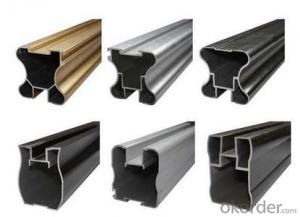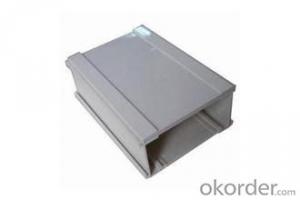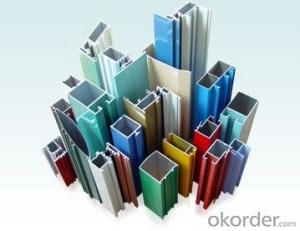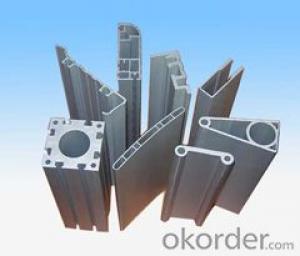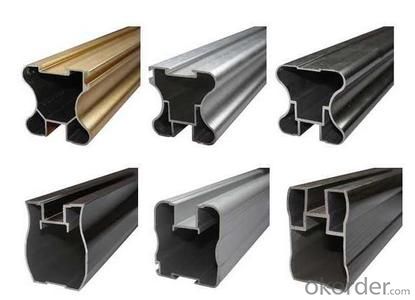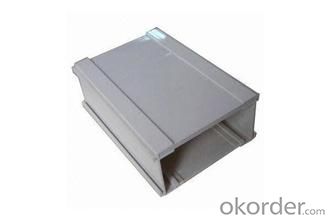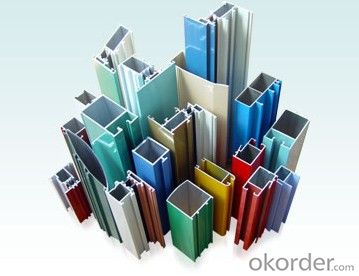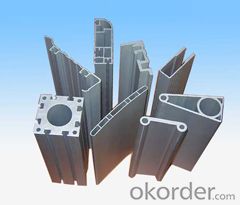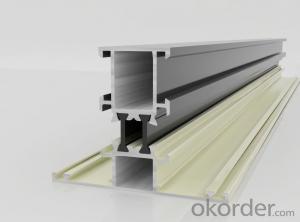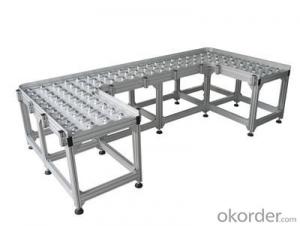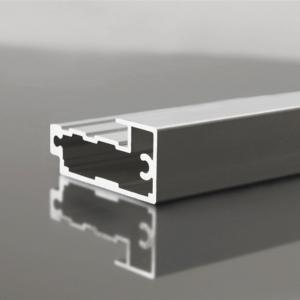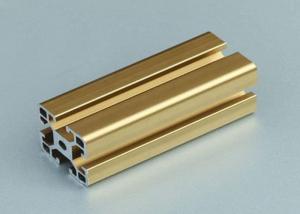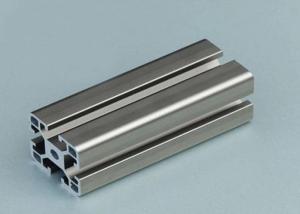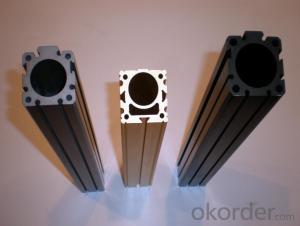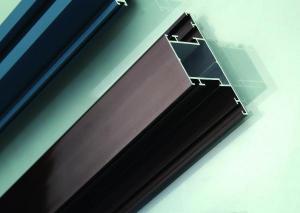Aluminum Channel Profiles 6061, 6063
- Loading Port:
- China Main Port
- Payment Terms:
- TT OR LC
- Min Order Qty:
- -
- Supply Capability:
- -
OKorder Service Pledge
OKorder Financial Service
You Might Also Like
Aluminium is a relatively soft,durable, lightweight, ductile and malleablemetal with appearance ranging from silvery to dull gray,depending on the surface roughness. It is nonmagnetic and does not easilyignite. A fresh film of aluminium serves as a good reflector (approximately92%) of visible light and an excellent reflector (as much as98%) of medium and far infrared radiation. The yield strength of pure aluminium is 7–11 MPa,while aluminium alloys have yield strengths ranging from200 MPa to 600 MPa. Aluminium has about one-third the density and stiffnessof steel. It iseasily machined,cast, drawn and extruded.
Alu Profile:
Material | Alloy 6063,6061,6005or according to customer’s choice |
Temper | T3, T4, T5, T6 |
Surface | Anodize, electrophoresis, powder coating, PVDF coating, wood grain painting, matted, etc. |
Length | Coating 6.5 meters, Anodizing 6.5 meters, Mill finish 5 meters |
Application | Industrial, electrical equipment(TV set, air conditioner, refrigerator, computer), decoration,construction, transportation |
Custom Made | We can package following with customer's request. |

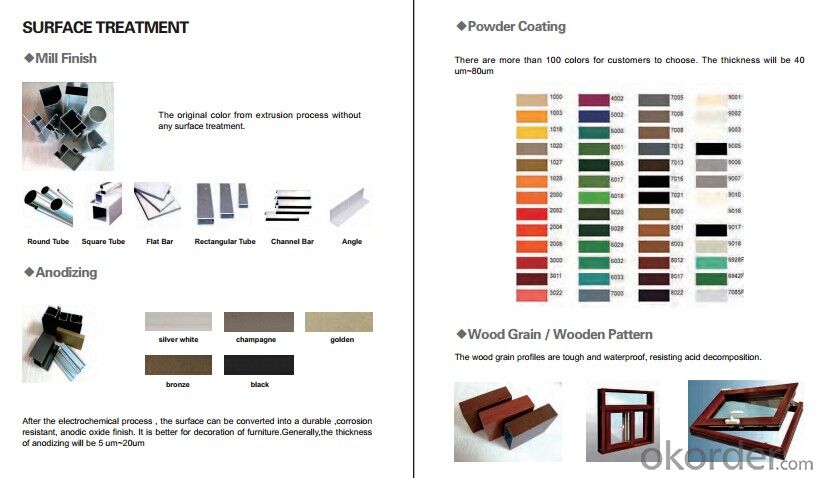
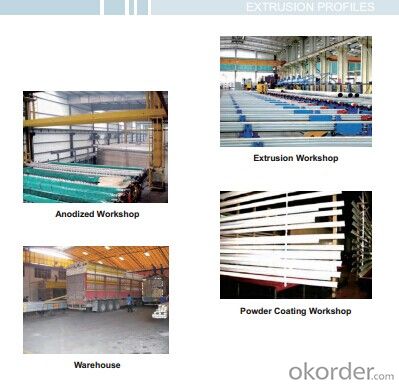
FAQ:
1. What is the form of payment?
Normally 30% TT, L/C at sight
2. Type of quotation?
FOB, CFR, CIF
3. Port of loading?
Guangzhou/Shenzhen port
4. Delivery time?
15-20 days after client’s deposit
- Q: How do you install aluminum profiles?
- To install aluminum profiles, first, determine the appropriate location and measurements for the profiles. Then, using a saw or cutter, cut the profiles to the desired length. Next, attach the profiles to the designated area using screws or brackets. Ensure that the profiles are securely fastened. Finally, make any necessary adjustments or modifications to achieve the desired fit and appearance.
- Q: This question asks for methods to ensure the reliable and durable installation of aluminum profiles.
- <p>To ensure the reliable and durable installation of aluminum profiles, follow these steps: Use high-quality aluminum materials that meet industry standards for strength and durability. Ensure proper alignment and level during installation to prevent warping or stress on the profiles. Use appropriate fasteners and adhesives recommended for aluminum to ensure a strong bond. Avoid over-tightening fasteners, which can cause deformation. Regularly inspect and maintain the profiles to check for signs of wear or damage, and address any issues promptly. This will help maintain the integrity and longevity of the aluminum profiles.</p>
- Q: Can aluminum profiles be used in cleanroom environments?
- Cleanroom environments can indeed utilize aluminum profiles. With its lightweight and adaptable nature, aluminum possesses a multitude of desirable qualities that make it well-suited for cleanroom applications. Being non-corrosive, non-magnetic, and boasting a high strength-to-weight ratio, aluminum is an ideal material for constructing cleanroom structures like walls, partitions, and equipment racks. Moreover, the assembly and disassembly of aluminum profiles are effortlessly accomplished, allowing for flexible cleanroom configurations and future modifications. These profiles can also be seamlessly integrated with other materials such as glass, acrylic, or stainless steel, in order to meet specific cleanroom requirements. Furthermore, aluminum profiles can be enhanced by anodization or coatings to fortify their cleanliness and resistance to contamination. Anodization furnishes a protective layer on the aluminum surface, rendering it more resistant to scratches and wear. Coatings like epoxy or powder coatings can further enhance the profiles' durability and cleanliness. In summary, aluminum profiles offer a multitude of advantages for cleanroom applications, including their lightweight nature, strength, corrosion resistance, and design flexibility.
- Q: This question is asking about the various types of insulation materials that can be used with aluminum profiles, which are commonly found in construction and manufacturing for their strength and light weight.
- <p>There are several types of insulation available for aluminum profiles, including thermal insulation, acoustic insulation, and electrical insulation. Thermal insulation materials such as polyurethane foam or mineral wool can be used to prevent heat transfer. Acoustic insulation, like soundproofing panels or rubber seals, can reduce noise transmission. Electrical insulation is crucial for preventing electrical conductivity and can be achieved with materials like neoprene or silicone rubber. Each type serves a specific purpose and is chosen based on the application's requirements, such as temperature control, noise reduction, or electrical safety.</p>
- Q: How are aluminum shapes made?
- 2, extrusion: extrusion is the method of forming profiles. Firstly, the die is designed and manufactured according to the section of the profile, and the heated round casting bar is extruded out of the die by using an extruder. Commonly used grade 6063 alloy, in the extrusion, also use an air-cooled quenching process and the artificial aging process, to complete the heat treatment strengthening. Different grades of alloy can be treated by heat treatment, and their heat treatment system is different.
- Q: This question asks about the various thicknesses and grades of aluminum profiles that are specifically used for roofing purposes.
- <p>Aluminum profiles for roofing come in different thicknesses and grades, which determine their strength and suitability for various applications. Common thicknesses range from 0.5mm to 1.5mm, with 0.5mm and 0.6mm being the most common for residential roofing. For commercial and industrial applications, thicknesses of 0.8mm to 1.5mm are often used due to their increased load-bearing capacity. Grades of aluminum profiles are typically classified based on their alloy composition, with 1100, 3003, 5005, and 6061 being the most common. Each grade has different properties, such as corrosion resistance, formability, and strength, which make them suitable for specific roofing applications. For instance, 3003-grade aluminum is widely used for roofing due to its good formability and moderate strength. The choice of thickness and grade depends on the specific requirements of the roofing project, such as the expected load, environmental conditions, and aesthetic preferences.</p>
- Q: Can aluminum profiles be customized?
- Indeed, the customization of aluminum profiles is possible. Aluminum, being a versatile material, lends itself easily to shaping and modification in order to fulfill particular demands. Tailoring aluminum profiles involves a range of procedures like cutting, drilling, bending, welding, as well as surface treatments such as anodizing or powder coating. These diverse options for customization facilitate the creation of exclusive forms, dimensions, and finishes that perfectly suit specific applications and design requirements. Whether it is for architectural, industrial, or decorative applications, aluminum profiles can be personalized to meet individual specifications, thus establishing them as a favored choice across various industries.
- Q: Can aluminum profiles be painted or coated?
- Aluminum profiles possess the ability to undergo painting or coating processes. The versatility of aluminum as a material allows for easy application of paint or coating, thereby enhancing its appearance, providing corrosion resistance, and improving durability. Numerous techniques exist for painting or coating aluminum profiles, such as powder coating, anodizing, and liquid coating. Powder coating stands as a favored option due to its capacity to deliver a lasting and consistent finish, while anodizing forms a protective oxide layer on the aluminum's surface. Conversely, liquid coating offers a broad spectrum of colors and finishes. In summary, painting or coating represents an effective and practical choice for individuals seeking to alter color, enhance aesthetics, or safeguard aluminum profiles.
- Q: Do aluminum profiles require any special tools or equipment for installation?
- Yes, aluminum profiles typically require specific tools and equipment for installation. These may include a miter saw or aluminum cutting saw, drill press or power drill, measuring tools, screwdrivers, clamps, and fasteners specific to aluminum profiles. Additionally, certain installations may require specialized equipment such as a router or end milling machine for precision cuts and shaping.
- Q: Measuring 3 meters long aluminum profiles of the straightness, you have what good method? What is the maximum deviation value allowed by our industry? In addition to the platform measurement, and what are the economic and practical methods, our factory stalls are small. Consider input costs.
- According to the high grade, the bend degree is 0.6*L (L is the length of your profile, profile) is 3 meters long, its curvature (by high-precision calculation) is 0.6*3=1.8mm, or twist, except that the length of the profile, but also know the profile width, and then according to standard gauge count.
Send your message to us
Aluminum Channel Profiles 6061, 6063
- Loading Port:
- China Main Port
- Payment Terms:
- TT OR LC
- Min Order Qty:
- -
- Supply Capability:
- -
OKorder Service Pledge
OKorder Financial Service
Similar products
Hot products
Hot Searches
Related keywords
